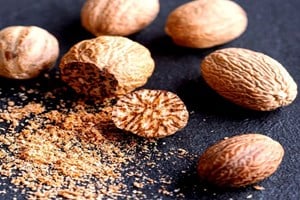
Acute Acetaminophen Overdose: Massive Ingestion
Patient Case
A 54 year old female presents to your emergency department via ambulance with chalky white residue around her mouth, hypotensive with a systolic blood pressure in the 80’s, and with a GCS of 4. Emergency Medical Services (EMS) reports she was found in a parking garage unresponsive with an empty bottle of co-formulated acetaminophen/diphenhydramine (Tylenol PM). Prior to Emergency Department (ED) arrival, she’s received 2 mg of naloxone with no effect. On arrival, you examine the patient and find her to be unresponsive to noxious stimuli, with pupils fixed at 4 mm bilaterally. She has minimal bowel sounds and is hypo-reflexive. You can’t illicit clonus. You decide to immediately intubate for airway protection. You fire off labs and they result below:
Na 134 mmol/L
AST 93 U/L
K 3.6 mmol/L
ALT 91 U/L
Chloride 92 mmol/L
ALP 49 U/L
CO2 8 mmol/L
Tbili 0.9 mg/dL
BUN 14 mg/dL
Creatinine 1.57 mg/dL
Glucose 95 mg/dL
AG 34
Lactic Acid 15.6 mmol/L
APAP 755 mcg/mL
ASA <3 mg/dL
Ethanol <10 mg/dL
Post-intubation arterial blood gas shows a PH of <7.0, pCO2 39.1, pO2 428; bicarbonate and base excess could not be calculated. The patient was admitted to the intensive care unit for profound acidosis, shock and coma in the setting of a massive intentional acetaminophen overdose.
Acetaminophen Overdose
Acetaminophen (APAP) overdose is one of the most common toxicologic complaints seen by emergency medicine providers. Toxicity is related to the amount of N-acetyl p-benzoquinoneimine (NAPQI) generated by the metabolism of the APAP parent compound. Normal APAP metabolism follows three well-known pathways; sulfation, glucuronidation, and CYP 450 oxidation. Sulfation and glucuronidation form non-toxic metabolites that are excreted by the kidneys. CYP 2E1 (and to a lesser extent other CYP 450 enzymes) convert APAP to the toxic intermediate NAPQI. At therapeutic doses of APAP, this intermediate can be neutralized by endogenous glutathione (GSH). When NAPQI levels rise too high, GSH stores are exhausted, leaving this toxic metabolite to wreak havoc on the body’s organs (most notably the liver and kidneys). Chronic alcoholics, the malnourished, and patients with pre-existing liver disease may have chronically depleted GSH stores at baseline making them more susceptible to overdose. N-acetylcysteine (NAC) is the mainstay of modern-day treatment of APAP poisoning and aims to replete GSH stores by providing its precursor molecule. In overdose, NAC is thought to replenish GSH levels which can then directly bind NAPQI allowing for sequestration and excretion. NAC also acts as a substrate for sulfation and as an intracellular glutathione substrate bolstering the nontoxic APAP metabolic pathways.[i]
Co-ingestion with opioids or anticholinergics may slow gastrointestinal emptying, leading to longer and sometimes unpredictable absorption of acetaminophen. Extended-release APAP formulations may also make traditional risk stratification and treatment algorithms less reliable.[ii] Under these circumstances a concept called “line crossing” on the Rumack-Matthew Nomogram may occur.[iii] Traditionally, in acute overdose, a 4-hour APAP concentration is drawn to determine a patient’s risk for developing hepatotoxicity. This is plotted on the Rumack-Matthew Nomogram and used to support the decision to initiate NAC. “Line crossing” occurs when a 4-hour APAP concentration is below the treatment line on the Rumack-Matthew Nomogram, but subsequent concentrations drawn later may be higher on the nomogram and indicate the need for treatment.[iv]
Massive Overdose
In acute ingestion, a formal definition for massive overdose has yet to be operationally defined. Depending on the study, massive cumulative ingestion ranges have been defined as >30g to >50 g and massive APAP concentrations have been defined as >250 mcg/ml to >500 mcg/ml at 4 hours post ingestion. Regardless, massive overdose is a rare event.[v] In massive overdose, unchecked NAPQI levels lead to oxidative stress, mitochondrial dysfunction, and cell death. Mitochondrial dysfunction is clinically seen with evidence of profound acidosis. In these instances, lactic acidosis and end organ failure may occur early in the APAP ingestion time course. These massive overdoses produce a unique challenge in terms of management with case reports describing the occurrence of liver failure and death despite standard NAC treatment. This has provided evidence to support increasing NAC dosing in these circumstances.
Case reports also describe methemoglobinemia in massive overdose. Although a mechanism is unknown, it is hypothesized that this may be related to the oxidizing effects of the parent compound APAP or its metabolites.[vi] Interestingly, methemoglobinemia is also a well-known side effect of APAP’s early ancestors phenacetin and acetanilide.[vii]
Treatment
Traditional NAC dosing follows two specific treatment options which hinge on whether a reliable time of ingestion is known. A thorough history is crucial, however often difficult to obtain due to patients being unreliable (particularly those with suicidal ideations) or having altered mental status (as in our case). In an acute ingestion, the Rumack-Mathew Nomogram can be used to risk stratify patients and determine whether NAC is needed. Acute ingestion standard NAC dosing can be given orally or intravenously. Intravenous dosing typically involves a 150 mg/kl bolus over 60 min followed by 12.5 mg/kg/h for 4 hours (50 mg/kg over 4 hours) then 6.25 mg/kg rate (100 mg/kg over 16 hours). However, in massive overdose, an increased NAC dose may be necessary. In 2019, Hendrickson et. al published a revised nomogram to help direct increased NAC dosing based on serum APAP concentrations. This strategy effectively doubles, triples, or quadruples the final continuous infusion bag (i.e. 6.25 mg/kg/h becomes 12.5 mg/kg/h, 18.75 mg/kg/h, or 25mg/kg/h depending on serum APAP concentration). Further validation is necessary, but this work has provided rationale for current higher dose strategies. In massive overdose there may also be a role for intermittent hemodialysis (IHD) or continuous renal replacement therapy (CRRT). Conventional protocols use the EXTRIP guidelines to determine dialysis needs. Current EXTRIP guidelines recommend dialysis under the following circumstances; [viii]
- APAP >1000 mg/L and NAC not administered.
- Signs of altered mental status, metabolic acidosis, elevated lactate, and APAP>700mg/L and NAC is not administered
- Signs of altered mental status, metabolic acidosis, elevated lactate, and APAP>900 mg/L even if NAC is administered
NAC dosing requires adjustment during dialysis.
Recently there is new research focusing on adjuncts to NAC and their role in managing APAP overdose.[ix] Fomepizole (4-Methylpyrazole or “4-MP”) has emerged as an intriguing option.[x],[xi] Fomepizole inhibits CYP 2E1 and in animal models has been shown to reduce the generation of NAPQI.[xii] Additionally, fomepizole is thought to reduce mitochondrial dysfunction through an unclear mechanism.[xiii] Through these two mechanisms, fomepizole may prove to be a potent adjunct particularly in massive overdose. Currently further research is needed to determine the optimal role for fomepizole in APAP poisoning.
Patient’s Hospital Course
Given the profound acidosis seen on initial presentation, nephrology was consulted early in the patient’s ED course. At 8 hours after NAC initiation, her repeat APAP level fell to 237 and she was started on CVVH. Upon admission to the ICU, she was noted to be hypoxic to the high 80s despite aggressive ventilator management to improve oxygenation. A methemoglobin level was sent and returned at 7.3%. Over the course of 24 hours, serial labs showed initial improvement in her renal function and acidosis. On post-ingestion day 2, her mental status improved and she began to follow provider commands. Despite her clinical improvement, her LFTs continued to worsen. A transthoracic echocardiogram at the bedside showed a newly reduced estimated LVEF of <10%. Given her echo findings, she was denied candidacy for liver transplant. On post-ingestion day 3, her lactic acidosis worsened and urine output fell. Her AST was measured at 10,874 and ALT >5,000. After two PEA cardiac arrests, the decision was made by family to make the patient CMO and she expired.
Take-home Points
- Massive APAP overdose presents differently than traditional acute APAP overdose, often patients are clinically unstable earlier in ingestion time course
- Consider increasing dose of NAC in massive overdose
- Methemoglobinemia is a rare phenomenon that has been reported in massive APAP overdose
- Consider early enhanced elimination when criteria for dialysis are met, EXTRIP guidelines can help in decision making.
- Fomepizole may have a role as an adjunct therapy to NAC in massive overdose but further research is needed
References
- [i] Hoffman, R. S., Howland, M. A., Lewin, N. A., Nelson, L. S., & Goldfrank, L. R. (2014). Goldfrank's Toxicologic Emergencies, (ebook). McGraw Hill Professional. 2799-2827
- [ii] Acetaminophen Overdose-Was it Extended- or Immediate-Release Pills? (2019, November 13). Retrieved December 14, 2020 from Learn More
- [iii] Kirschner, R. I., Rozier, C. M., Smith, L. M., & Jacobitz, K. L. (2016). Nomogram line crossing after acetaminophen combination product overdose. Clinical toxicology, 54(1), 40-46.
- [iv] Mutsaers, A., Green, J. P., Sivilotti, M. L., Yarema, M. C., Tucker, D., Johnson, D. W., ... & Rumack, B. H. (2019). Changing nomogram risk zone classification with serial testing after acute acetaminophen overdose: a retrospective database analysis. Clinical Toxicology, 57(6), 380-386.
- [v] Hendrickson, R. G. (2019). What is the most appropriate dose of N-acetylcysteine after massive acetaminophen overdose?. Clinical Toxicology, 57(8), 686-691.
- [vi] Rianprakaisang, T., Blumenberg, A., & Hendrickson, R. G. (2020). Methemoglobinemia associated with massive acetaminophen ingestion: a case series. Clinical Toxicology, 58(6), 495-497.
- [vii] Hoffman, R. S., Howland, M. A., Lewin, N. A., Nelson, L. S., & Goldfrank, L. R. (2014). Goldfrank's Toxicologic Emergencies, (ebook). McGraw Hill Professional. 2688-2760
- [viii] Gosselin, S., Juurlink, D. N., Kielstein, J. T., Ghannoum, M., Lavergne, V., Nolin, T. D., ... & Extrip Workgroup. (2014). Extracorporeal treatment for acetaminophen poisoning: recommendations from the EXTRIP workgroup. Clinical toxicology, 52(8), 856-867.
- [ix] Akakpo, J. Y., Ramachandran, A., & Jaeschke, H. (2020). Novel strategies for the treatment of acetaminophen hepatotoxicity. Expert opinion on drug metabolism & toxicology, 16(11), 1039-1050.
- [x] Woolum, J. A., Hays, W. B., & Patel, K. H. (2020). Use of fomepizole, n-acetylcysteine, and hemodialysis for massive acetaminophen overdose. The American journal of emergency medicine, 38(3), 692-e5.
- [xi] Rampon, G., Wartman, H., Osmon, S., & Scalzo, A. (2020). Use of fomepizole as an adjunct in the treatment of acetaminophen overdose: a case series. Toxicology Communications, 4(1), 1-4.
- [xii] Akakpo, J. Y., Ramachandran, A., Kandel, S. E., Ni, H. M., Kumer, S. C., Rumack, B. H., & Jaeschke, H. (2018). 4-Methylpyrazole protects against acetaminophen hepatotoxicity in mice and in primary human hepatocytes. Human & experimental toxicology, 37(12), 1310-1322.
- [xiii] Jaeschke, H., Akakpo, J. Y., Umbaugh, D. S., & Ramachandran, A. (2020). Novel therapeutic approaches against acetaminophen-induced liver injury and acute liver failure. Toxicological Sciences, 174(2), 159-167.
Brett Johnson, MD
Powell Graham, MD
Stephanie Carreiro, MD



